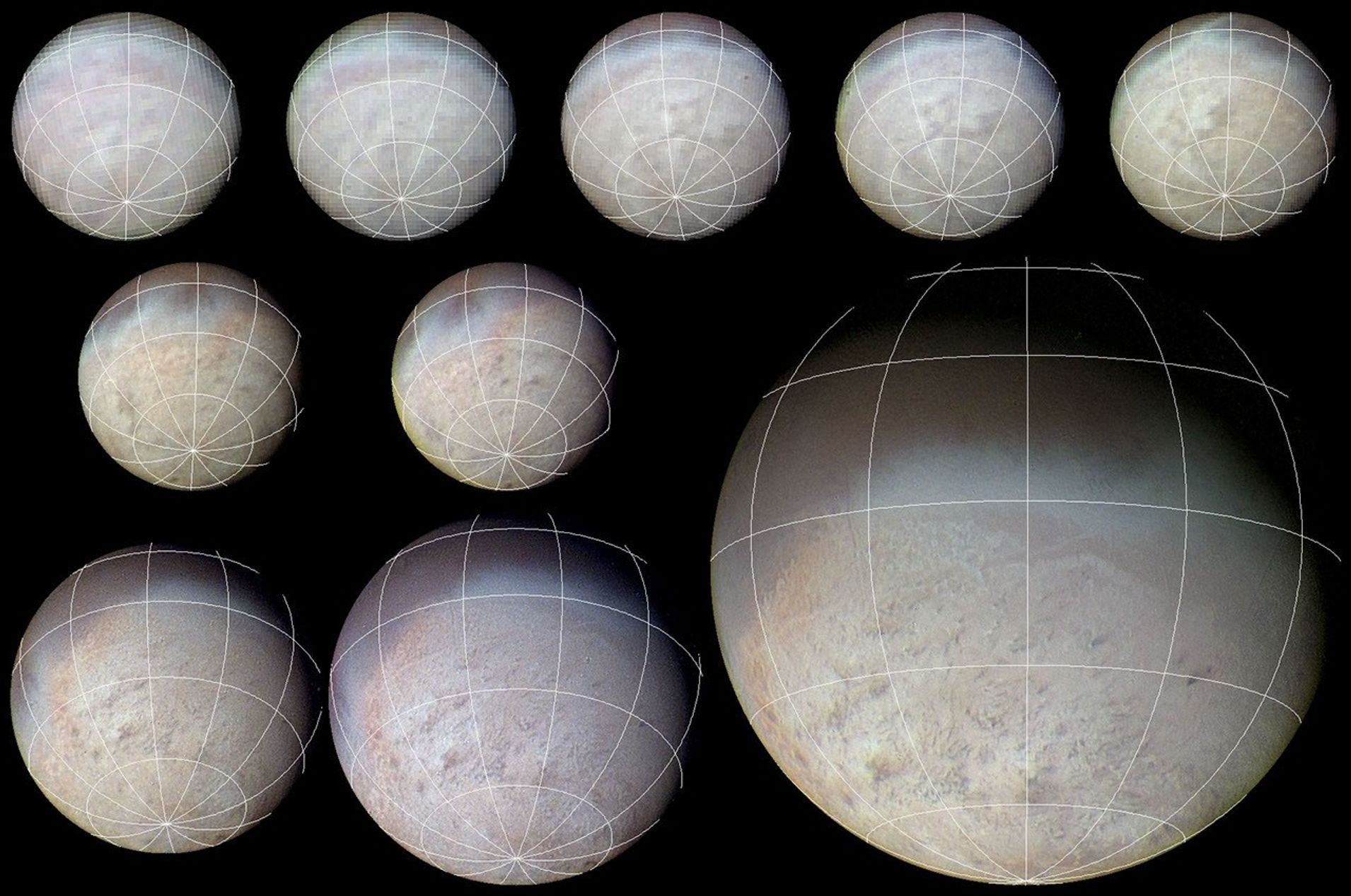Color Sequence of Triton Approach Images
| Credit | NASA/JPL/USGS |
|---|---|
| PIA Number | PIA00329 |
| Language |
|
Triton Voyager 2 approach sequence with latitude-longitude grid superposed. The color image was reconstructed by making a computer composite of three black and white images taken through red, green, and blue filters. Details on Triton's surface unfold dramatically in this sequence of approach images. South Pole near the bottom of the images at the convergence of lines of longitude. Resolution changes from about 60 km/pixel (37 mi/pixel) in the image at upper left taken from a distance of 500,000 (311,000 mi) to about 5 km/pixel (3.1 mi/pixel) for the image at lower right. Global and regional albedo features are visible in all of the images. The albedo features can be tracked in successive images and show that Triton has undergone about 3/4 of a rotation during the 4.3-day interval over which these images were obtained. A southern polar cap of bright pink, yellow, and white materials covers nearly all of the southern hemisphere; these materials consist of nitrogen ice with traces of other substances, including frozen methane and carbon monoxide. Feeble ultraviolet radiation from the sun is thought to act on methane to cause chemical reactions to the pinkish yellowish substances. At the time of the Voyager 2 flyby (Aug. 1989) Triton's southern hemisphere was starting the summer season and the South Pole was canted toward the sun day and night, such that the polar cap was sublimating under the relatively 'hot' summer sun (surface temperature about 38 K, about -391 degree F). Numerous dark streaks on the southern polar nitrogen-ice cap are thought to consist of dark dust deposited by prevailing winds in Triton's tenuous nitrogen atmosphere. A bluish band, seen in all of the images, nearly circumstances Triton's equator; this band is thought to consist of fairly nitrogen frost, perhaps deposited in the decade prior to Voyager 2's flyby.




























